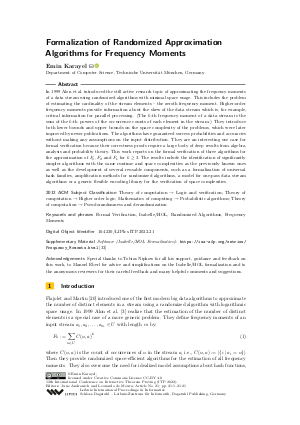LIPIcs.ITP.2022.21.pdf
- Filesize: 0.94 MB
- 21 pages

 Creative Commons Attribution 4.0 International license
Creative Commons Attribution 4.0 International license





Feedback for Dagstuhl Publishing